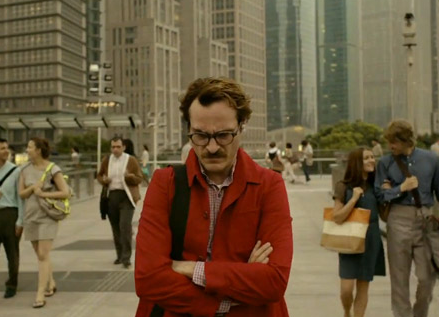
“WOMEN TALKING” My rating: B + (Theaters)
104 minutes | MPAA rating: PG-13
True originality in filmmaking may be impossible. After a century plus of cinema most of the easy fruit has been picked; it takes something pretty special to make us sit up straight and pay attention.
“Women Talking” does that with regularity. It’s a mix of poetic parable and docudrama that hits an emotional/intellectual sweet spot, leaving the viewer with a heady mix of feelings unlike anything I’ve experienced.
Written and directed by Sarah Polley (it’s based on the nonfiction book by Miriam Toews, who shares screenplay credit), “Women Talking” is inspired by real-world events. A decade ago in Bolivia the women of a Mennonite community realized that some of their menfolk had been dosing them with animal tranquilizers and raping them in their sleep.
This film (the setting appears to be rural Canada) imagines how those women — purposely uneducated but by no means unintelligent — might gather to decide whether to stick with their religious community or seek lives in the greater world few know much about (they’ve had no radio, no TV, no Worldwide Web).
“Women Talking” opens with a disturbing image, an overhead shot of the maiden Ona (Rooney Mara) awakening to find her legs and bedclothes smeared with blood.
Cut to a man cowering in a corncrib and being beaten by the furious Salome (Claire Foy); other men have to pull her off the miscreant lest she kill him.
In just a few carefully selected moments the film gives us the lay of the land. The men have gone off to town to bail out their lecherous brothers arrested by the cops. For a few hours the women are left alone to make a choice.
Do they forgive the transgressors and carry on as if nothing had happened? Do they stay in the colony and fight the societal structure that has always limited their ambitions? Or do they pull up stakes and move out, taking with them the younger children?
The bulk of “Women Talking” is exactly that. A dozen or so women retreat to a hayloft overlooking the fields to debate their future. Interestingly enough, none exhibits religious doubts; rather, their beef is with men who don’t live up to their half of the bargain.
Some women — embodied by the scar-faced Janz (Frances McDormand) — will stay no matter what the others decide. They simply cannot fathom a life other than the one they’ve experienced in the colony.
Salome, whose violent temper we have already witnessed, bristles with defiance, sneering at admonitions to behave with traditional feminine submission and restraint. “I’ll stand my ground and deal with God’s wrath if I have to,” she seethes.
Mariche (Jessie Buckley) is torn between fury and fear. Her husband (like the other men, we see him only glancingly, as if out of the corner of our eye) enforces household rules with his fists. If she attempts to leave with their children might be the last thing she ever does.
Striking a more conciliatory tone is Ona, now pregnant by one of her nocturnal molesters. Despite this she exudes a preternatural calm — you can’t help thinking of another virgin who found herself with child.

Ben Whishaw, Rooney Mara, Claire Foy
The debate is overseen by Agata (Judith Ivey), the oldest of the women. There are some teenage girls eager to bail on the colony if given the chance. A bit of a wild card is Greta (Sheila McCarthy), a benign eccentric who mostly wants to talk about her beloved buggy horses.
There is but one man to witness all this. August (Ben Whishaw), the colony’s school teacher, has been brought in to take notes on the proceedings (apparently none of the women can read or write). This gentle soul offers advice when asked and quietly worships Ona from afar…clearly he is hopelessly in love.
“Women Talking” could feel claustrophobic and stage bound, but Polley periodically takes us outside to mingle with the colony’s children who are awaiting their mothers’ decision. Sometimes the camera roams the rows of corn or lifts overhead like a hovering bird.
Luc Montpellier’s photography employs a desaturated color scheme; the absense of bright hues somehow focuses our senses on the issues and personalities at hand. Similarly, Hidur Gudnadottir’s quietly evocative musical score suggest a world of simple pleasures — acoustic guitar, hammered dulcimer and chimes that ultimately subsume into a piece for string orchestra.
Polley and Toews string it all together with voiceover narration provided by one of the colony’s adolescent girls (I was reminded of Linda Manz’s narration for Terrence Malick’s “Days of Heaven”). This monologue is in the form of a letter to Ona’s unborn child.
All this masterfully builds into a quietly devastating emotional crescendo, sending us off with a rare mingling of sadness and hope.
| Robert W. Butler









